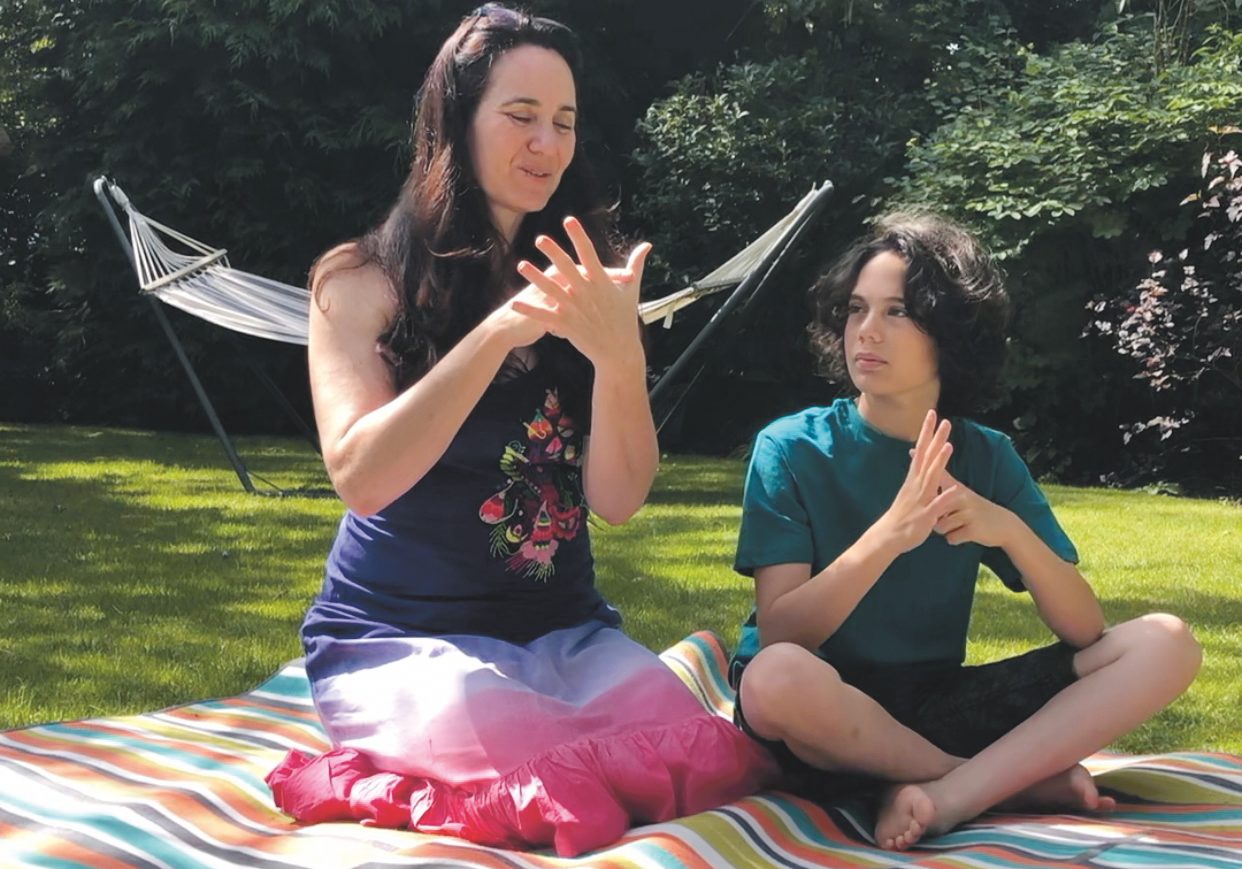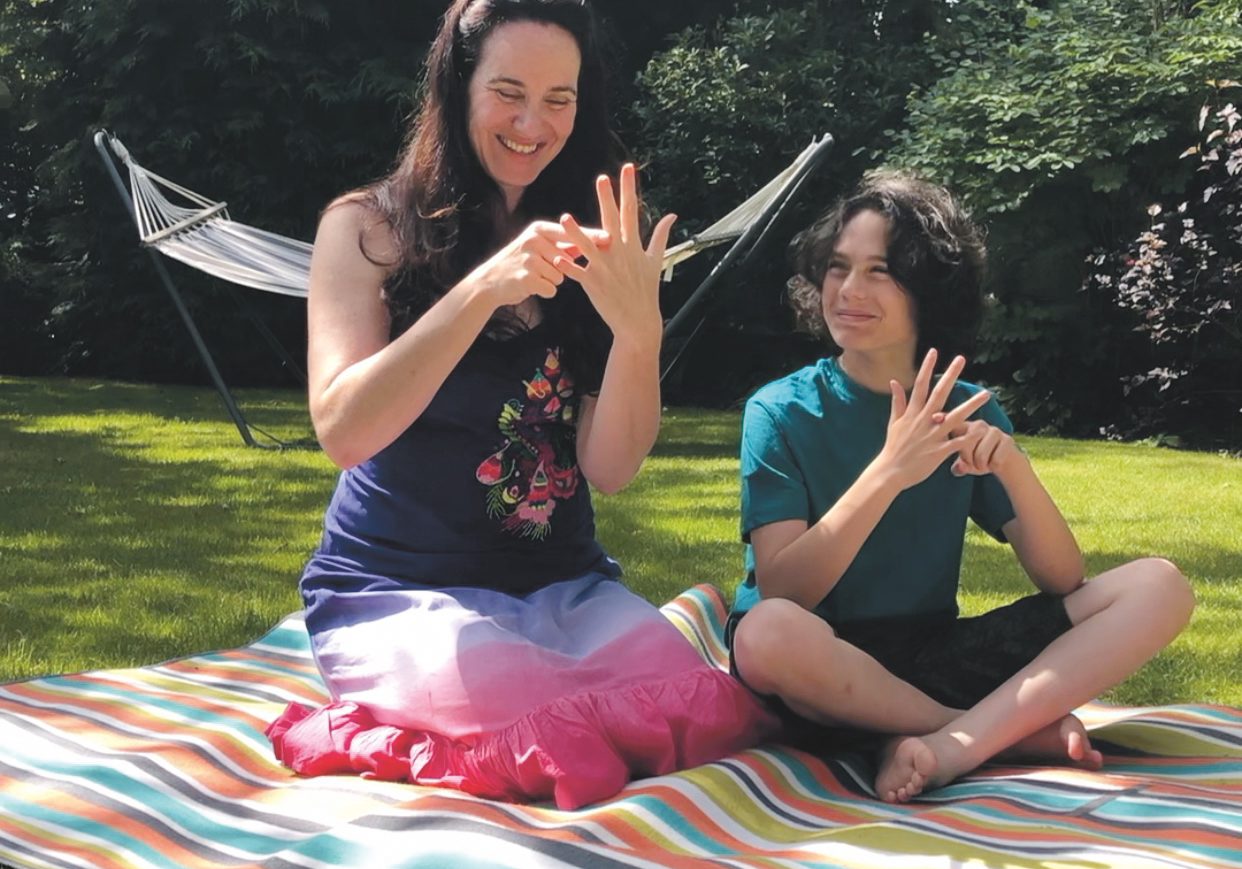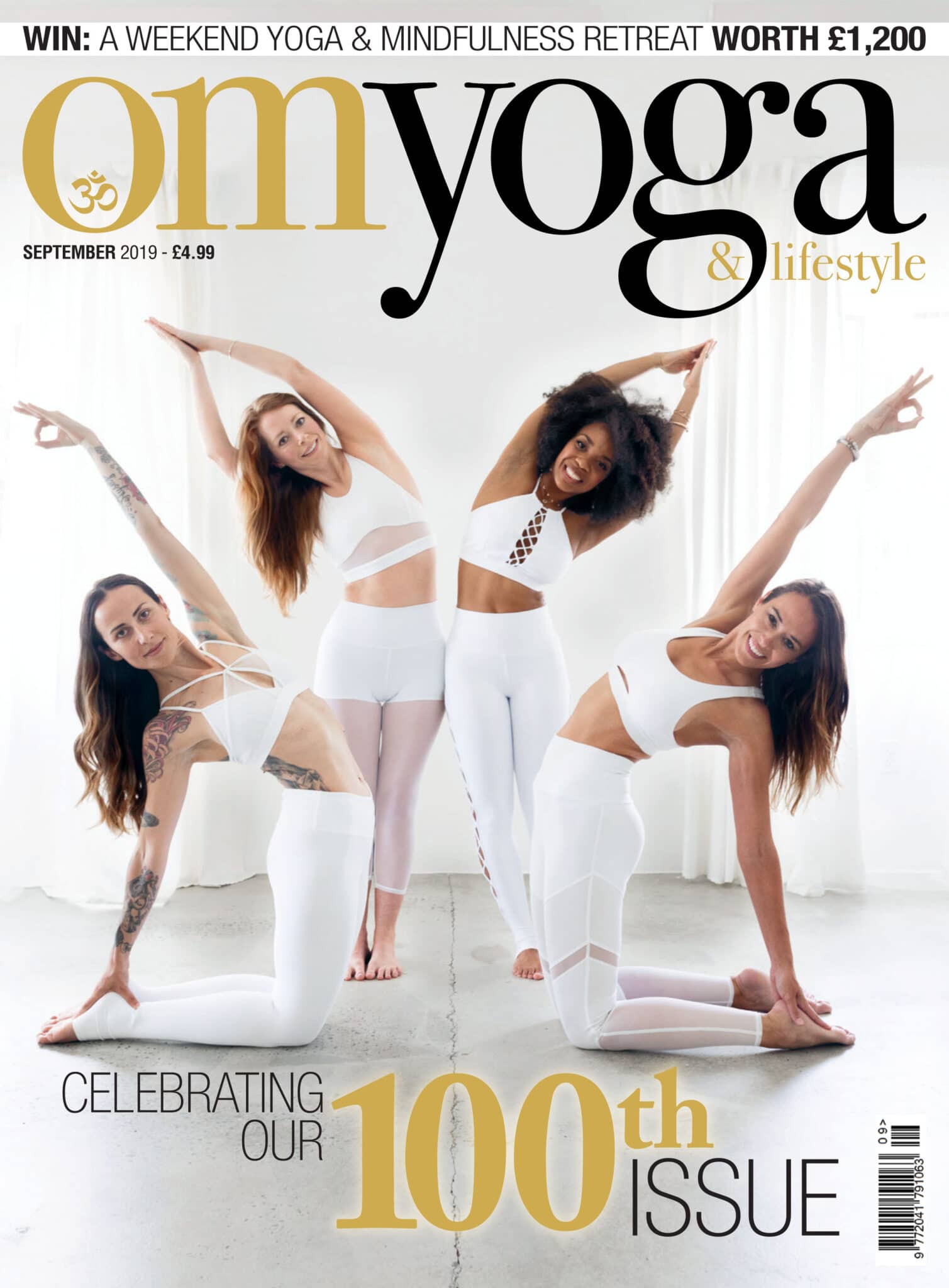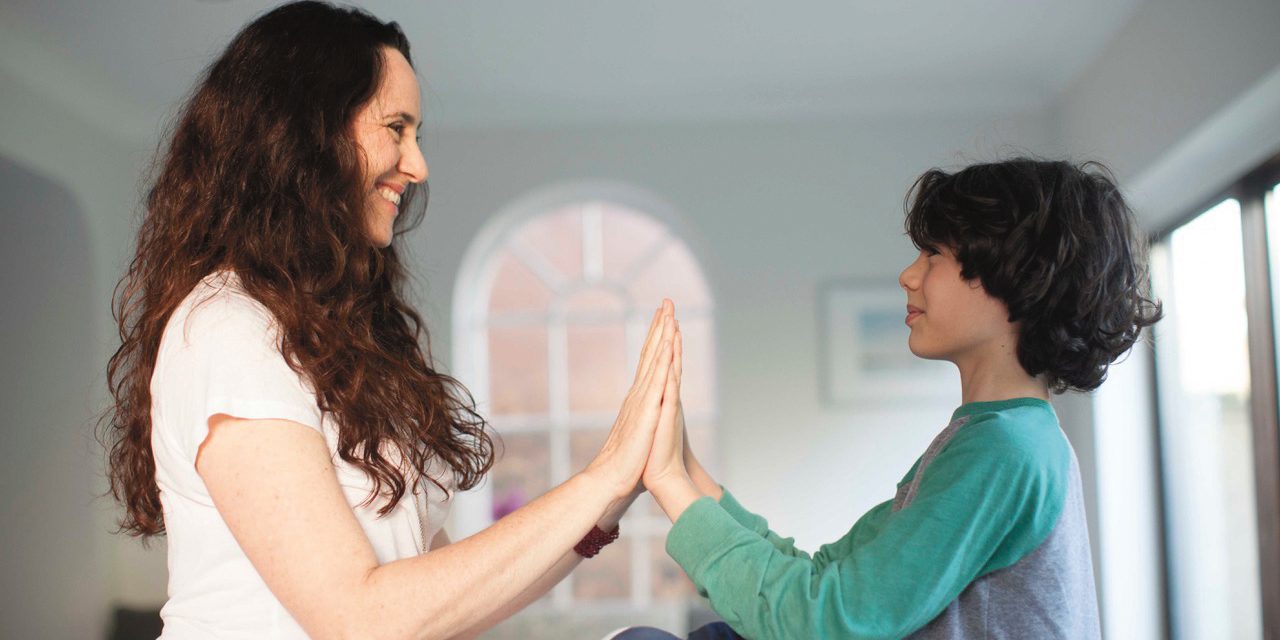
The creative teacher
Empowering children through yoga and creativity. By Ayala Homossany
Have you ever felt that you are not creative? Are phrases such as ‘I can’t do it’, ‘I can’t draw’, ‘I don’t have any more ideas’ and ‘I am just not creative’, part of your vocabulary? If the answer is yes, then know that you are not alone. Many of us have doubts about our creative abilities but the good news is that we were all born creative with an inherent curiosity and endless imagination. Creativity doesn’t only belong to certain people such as an artist or a musician. Creativity is a human characteristic which allows us to find solutions to everyday problems. It enables us to see two sides of the coin, take risks, and face fears. It also contributes dramatically to our wellbeing.
Most child-development theories view young children as highly creative with a natural tendency to fantasise, experiment and explore their environment. However, this high level of creativity is not necessarily maintained throughout childhood and into adulthood.
So how can we, as adults, support and maintain a high level of creativity in children, so that they can grow up and keep that creative spark?
In addition to skills, personality traits, and abilities which are all key components of creativity, research shows that by forming a creative environment and facilitating a class with a creative teacher and creative teaching, we can establish educational settings and a supportive environment that support and nourish children’s creativity. This is the beauty of yoga for children.
A creative environment
A big part of the creative environment is related to the encouragement of playfulness in order to encourage creativity. During a yoga class, especially throughout early childhood, we can create opportunities to take part in imaginative play activities. Many poses are named after animals and this opens the door for additional activities and exploration in the sense that when we choose an animal pose, we can fully embody the way the animal is moving, the sound it makes, and its different characteristics. For example, with Downward Facing Dog pose, we can start by walking like dogs around the room or on a mat, sniffing and looking for a bone, digging a hole in the ground to hide the bone, and barking when we meet a friend. By fully embodying the yoga pose we offer the children an opportunity to take part in an imaginative role play.
Free choice of activities during a children’s yoga class is also key in setting a creative environment. That can be easily translated into a yoga class by having multiple stations with different yoga-related games and activities such as having several breathing games, with or without props. These games can include activities such as blowing feathers on the floor or taking five breaths using our fingers in the ‘Snail Trail’ [see box below]. Creating a yoga sequence with yoga cards or balancing on blocks and bolsters which are laid out in different shapes can also serve as part of the multiple stations class. On a smaller scale, we can choose a pose and practice it in many different ways. Let the children choose how their tree will look by exploring different positions for the arms and for the legs and even to choose if their tree will be a standing tree or a lying down tree.
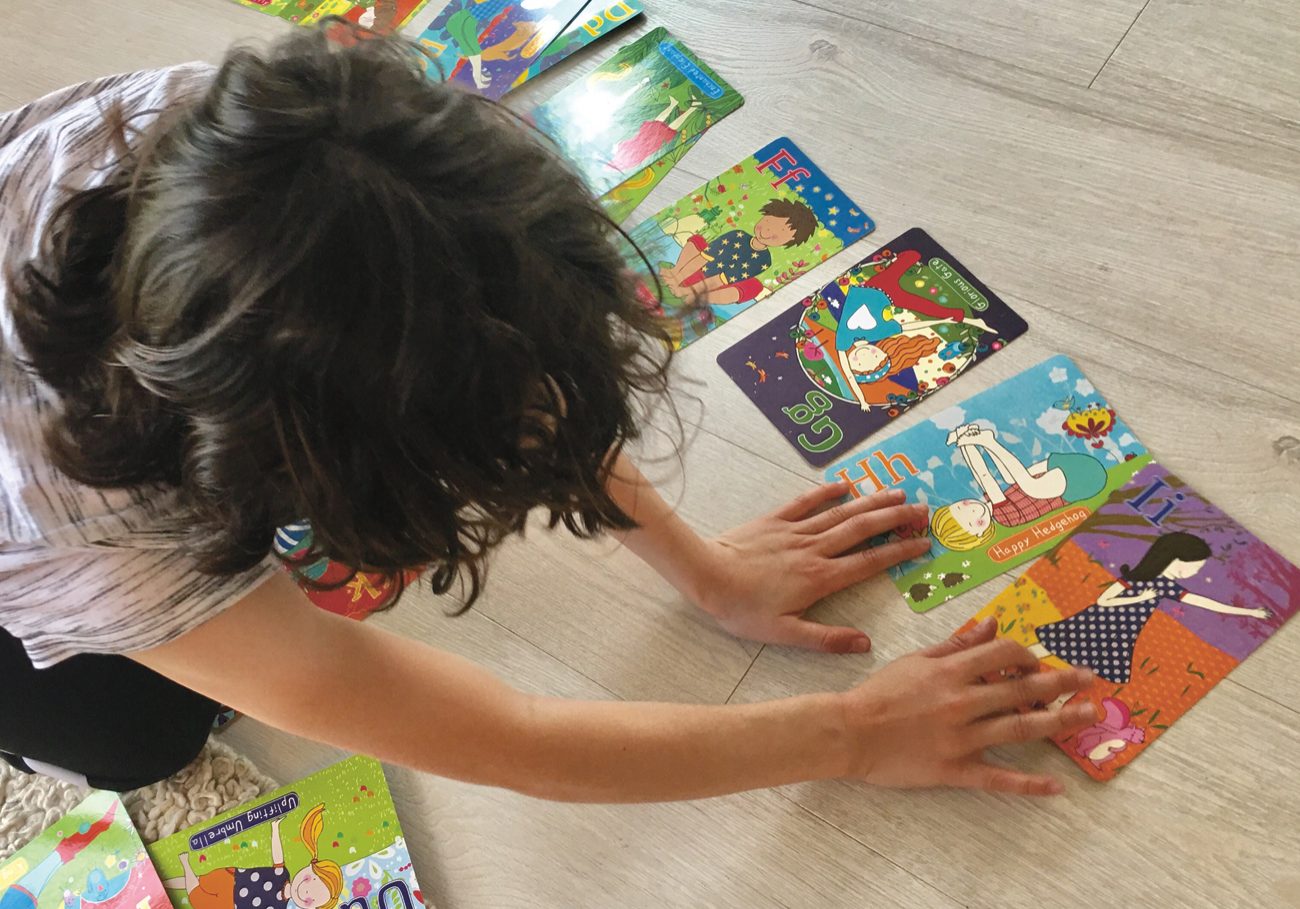
Your inner teacher
In order to encourage children’s creative behaviours during yoga, we want to look for opportunities to ask them open-ended question such as: ‘How does it make you feel when you do a certain pose’, or ‘What do you feel in your body or mind after relaxation?’, or any other questions which lead to open exploration and validate their experience. We look to encourage and guide the children to question the obvious. We also want to model creative thinking and behaviour, by adapting the notion of creativity and emphasising the creative process, rather than judging the quality of the yoga pose. When we are not judging, we are offering children a safe space to explore more than one way of practicing a familiar pose, and by accepting their interpretation of the pose, we demonstrate to them that there are no rights or wrongs, just different ways of looking at things. We want to motivate children to try out new ideas and activities. For instance, making up their own yoga story, or coming up with a new yoga pose and giving it a new name. We also want to bring to children’s attention unexpected answers from their peers.
Another important aspect for us being a creative teacher is by helping children to learn to stand up for their own ideas, especially when they are very different to their friends ideas and give them the freedom to decide what should be done in a certain situation.
As teachers, we should always be aware that with our pure intention to teach yoga to children we can become too prescriptive and too deductive. That might limit creativity and discourage fantasy. When we share yoga with children we become more open to our inner creative teacher, encourage self-confidence in the children and support their creative self.
As always, one must find the balance between ‘teach’ and ‘share’. Eventually, we want to find that balance between structure and freedom of expression, so creativity can be nourished, stimulated and help empower children.
Ayala Homossany runs the Yogacampus Children’s Yoga Teacher Training ‘Empowering Children through Yoga and Creativity’ and is the author of the award-winning Enchanted Wonders A-Z cards (ayalayoga.com)
